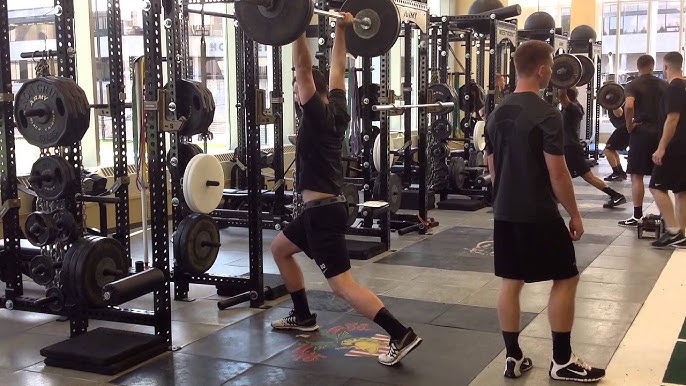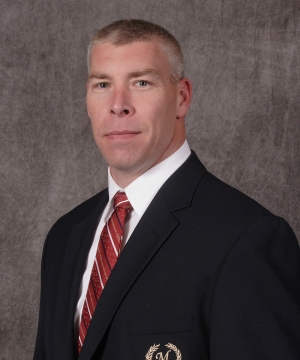Summer 2023
Army Lacrosse: Training soldiers as athletes

Whether on the lacrosse field or “in the field,” strength, speed, and conditioning are critical for mission success. The program’s strength and conditioning goals are to increase performance and reduce injuries. Both athletes and soldiers must always be in a state of readiness. As athletes continue to want to improve strength, speed, agility, and mobility to help their game, I am always receiving messages from soldiers wanting to be better prepared for their next mission in the same way. The goal of our program at West Point ensures the cadet-athletes are ready for every game.
All athletes and soldiers are unique, and their programming must reflect their individual needs. As a coach, you must know your athlete’s strengths and weaknesses. With our cadets, we program around a multitude of factors, including but not limited to their deficiencies coming in, pre or existing injuries, or biomechanical issues. The prescribed training must be conducive to the athlete’s or soldier’s goals. In the sport of lacrosse, we have multiple positions and when I program for soldiers (Infantry, Field Artillery, Armor, etc.), I must know what energy systems will be predominantly used, mission parameters, and the time the soldier has for training up.
Developing the Military Athlete
As the Director of Sports Performance, I provide team-oriented performance training, including analytics, strength, speed-agility, and sports nutrition for our cadet-athletes, and provide programming for our military to meet Ranger, Special Forces, and Delta qualification for candidacy selection. Our athletes will incorporate strength training as one of the major components of their development. Just like military personnel are focused on specific job requirements, our athletes are recruited to play a specific sport and position and training must be programmed to improve their fitness levels and athletic ability. Whereas powerlifters and weightlifters train to compete in the exercises they train.

Program
- Train movements rather than body parts: by developing movement patterns that will enhance mobility and function in their sport or discipline.
- A training program should mostly consist of ground-based movements. These movements will continue to work on producing force into the ground which improves the athletes’ speed, jumping, explosiveness, and ability to change direction. These attributes are important for the athlete and soldier.
- Multi-joint movements are exercises that will get the athlete the largest gains. We focus on the squat and its variations and the clean and its variations. We also focus on single-leg movements. Rarely do athletes perform in competition on both feet. Single-leg strength becomes critical to developing balance and stabilization. Additionally, single-leg movements work the kinetic chain like running.
- Train the whole body: on a court, on a field, or “in the field” for the military. Most situations require the whole body to be active. We break down the body into three categories, total body, upper body, and lower body.
- 3x/week training allows for recovery and the ability to program our speed and agility work alongside their sport-specific practices.
- 4x/week training allows for additional recovery between workouts when training an upper/lower split.
Annual Plan
The annual plan for a sport is easily programmed because of the consistency in the playing season whereas the annual plan for a soldier’s deployment can vary based on when the unit is activated. But the annual plan can have the same outline. Periodization programming will play an important role in the success of individuals. Exercise selection, exercise order, volume, intensity, and frequency all must be factored into the periodization plan for strength development. Aerobic conditioning, anaerobic conditioning, acceleration, linear speed development, multi-directional training, and plyometrics are factors that must be accounted for in the conditioning part of the periodization plan. The third area is the mobility that is programmed. Combining these three areas gives you a complete program.
The plan begins after the last day of competition or deployment. There are three seasons to the annual plan, Reload, Developmental, and Competitive.
- The Reload phase will last 2-4 weeks for our athletes and up to eight weeks for soldiers coming off deployment. This block of the program should consist of movements that are not normally in the developmental block, focusing on rehabilitation, mobility, and prehabilitation. The goal should be close as close to fully healthy as you can.
- The Developmental phase will last 16 to 30 weeks depending on the length of the season. For soldiers, this block can be longer depending on their next deployment. During this block, the goal should be to develop strength, speed, agility, conditioning, mobility, flexibility, and overall fitness targeted toward the next competitive season. For lacrosse, we start with the Summer program (June 1 to mid-August), fall program (Mid-August to October 30), and winter program (November 1 to January 5). During the first block, this is a good time to increase the volume of prehabilitation exercises and utilize longer eccentrics.
- The Competitive season’s program goal is to continue to improve the physical attributes needed for the athlete. For the soldier, maintaining this program on deployment is important. This block will last between 12-20 weeks depending on the sport. For soldiers, maintaining a readiness level and continuing to improve is valuable to the success of mission.
» ALSO SEE: Army introduces MASTR-E wearable tool to better soldier readiness
The duration of each season of the annual play will vary but the tactical work that is incorporated will be a factor that must be addressed. Whether it is the skill involved with playing a sport or the specific military training that a soldier performs every week it is important to plan for these events.



